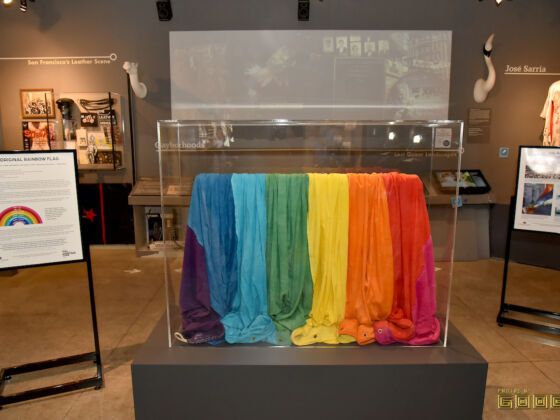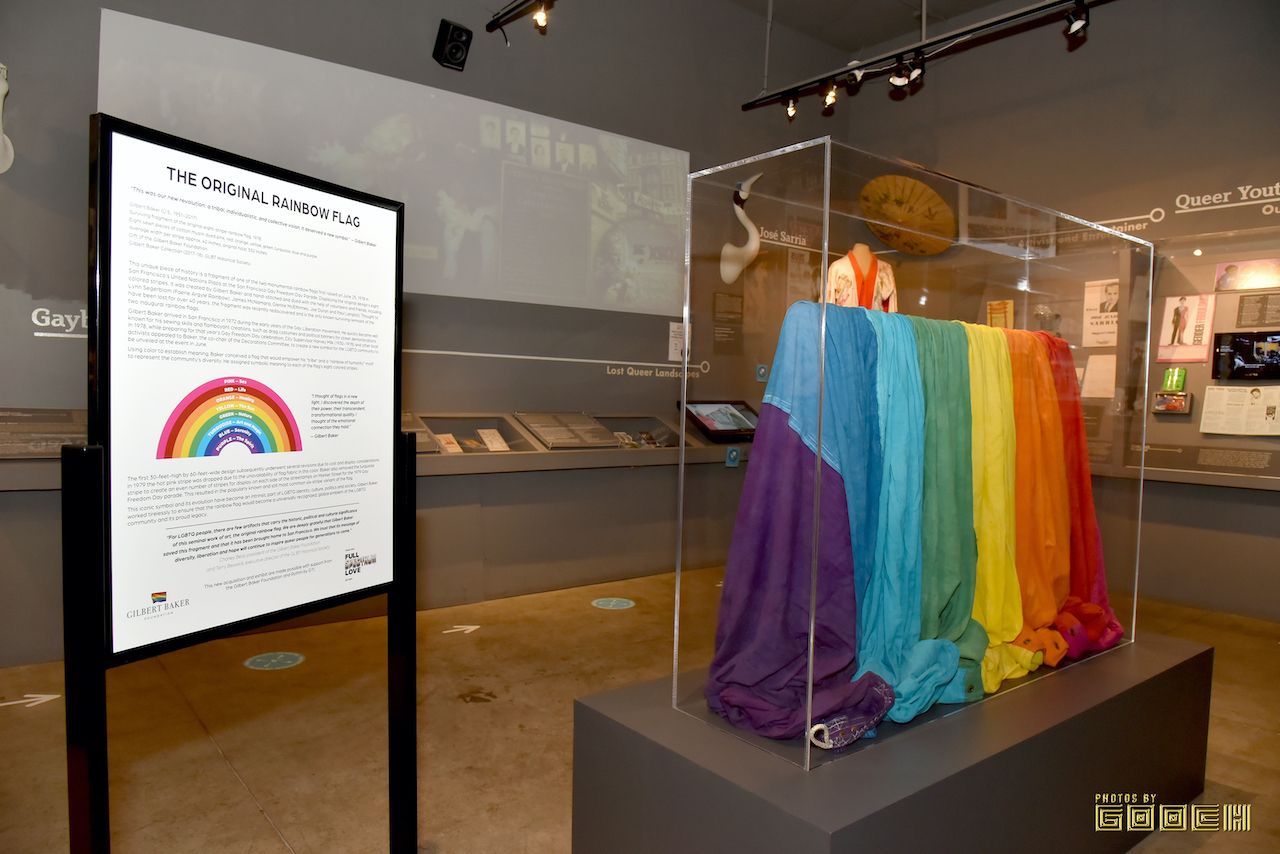A piece of LGBTQ history that was thought to be lost forever has been unearthed, and it will now be displayed at San Francisco’s GLBT Historical Society museum.
Ever wondered where the rainbow flag to represent Pride came from? Gilbert Baker arrived in San Francisco in time for the Gay Liberation Movement in 1972 and became known for his sewing creations. In 1978, Baker was asked to create a new symbol to represent the Pride community for the Gay Freedom Day celebration put on by city supervisor Harvey Milk and other local activists. Baker designed and created what we now know as the Pride flag, as well as several companion flags. All were hand-stitched and dyed with the help of friends and volunteers, according to the GLBT Historical Society. While the original 30-feet-high by 60-feet-wide rainbow flag was partially destroyed by mildew from poor storage, a 10-feet-high by 28-feet-wide fragment is on display over 40 years after its creation.

